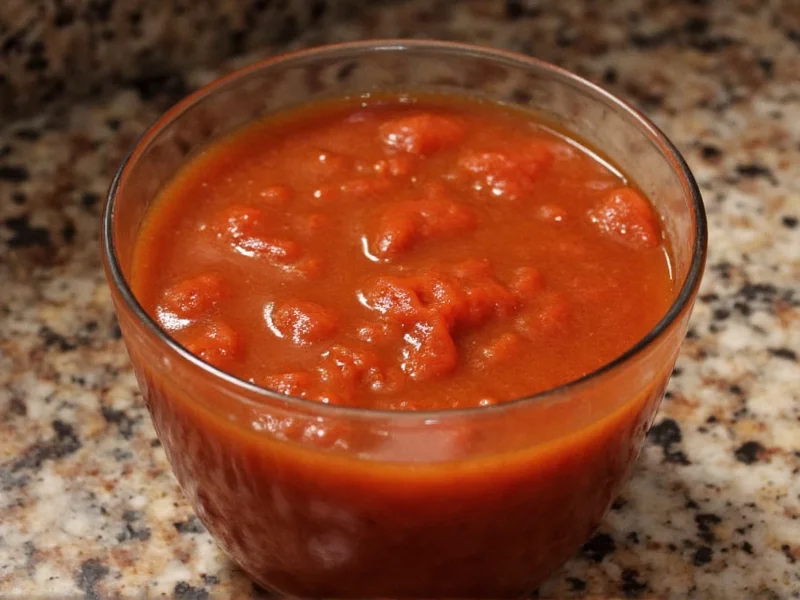Cuban mojo sauce represents more than just a kitchen staple—it's a cultural touchstone that connects modern cooks to centuries of Caribbean culinary tradition. Understanding its components and applications unlocks authentic flavors that have defined Cuban cooking for generations. This guide explores the sauce's origins, essential ingredients, preparation methods, and versatile uses to help you master this foundational element of Cuban cuisine.
The Cultural Roots of Cuban Mojo Sauce
Mojo sauce traces its lineage to the Canary Islands, where Spanish settlers developed a similar garlic-citrus sauce. When these settlers migrated to Cuba during the 19th century, they adapted their traditional mojo to incorporate local ingredients, particularly the abundant sour oranges (naranja agria) that thrived in Cuba's tropical climate. Unlike its Spanish counterpart, Cuban mojo evolved to feature a more pronounced citrus element balanced with robust garlic notes.
The term "mojo" likely derives from the Portuguese word "molho," meaning sauce. In Cuban cooking, this sauce became indispensable for preparing iconic dishes like lechón asado (roast pork), where it both tenderizes and infuses meat with complex flavors. Traditional Cuban households often maintain their own family variations, passed down through generations, making mojo sauce a living culinary heirloom.
Essential Ingredients and Their Roles
The magic of authentic Cuban mojo sauce lies in the precise balance of its core components. Each ingredient serves a specific purpose in creating the sauce's distinctive flavor profile:
| Ingredient | Traditional Amount | Function |
|---|---|---|
| Sour orange juice | 1 cup | Provides distinctive tartness without overwhelming acidity |
| Fresh garlic | 6-8 cloves | Creates the sauce's aromatic foundation |
| Olive oil | 1/4 cup | Carries flavors and helps emulsify the sauce |
| Ground cumin | 1 tsp | Adds earthy warmth and depth |
| Dried oregano | 1 tsp | Contributes herbal complexity |
| Salt | To taste | Enhances and balances all flavors |
Many home cooks debate the ideal garlic preparation method—some prefer crushing cloves with a mortar and pestle for maximum flavor release, while others finely mince for more even distribution. The quality of orange juice proves equally critical; authentic Cuban mojo requires the unique tart-sweet balance of naranja agria, which commercial "bitter orange" juices attempt to replicate.
Traditional Preparation Method
Creating authentic Cuban mojo sauce requires attention to technique as much as ingredients. The traditional preparation follows these steps:
- Extract fresh juice from 4-6 sour oranges (approximately 1 cup)
- Mince or crush 6-8 garlic cloves to a fine paste
- Combine garlic with 1 teaspoon each of cumin and dried oregano
- Add 1/4 cup olive oil and mix thoroughly
- Gradually incorporate orange juice while whisking
- Season with salt to taste
- Allow to rest for at least 30 minutes before use
The resting period proves essential, as it allows the garlic's enzymes to interact with the citrus, developing the sauce's characteristic flavor. Some traditional preparations include a small amount of onion or cilantro, though purists argue these additions stray from the authentic profile.
Variations Across Regions and Households
While the core ingredients remain consistent, Cuban mojo sauce shows remarkable regional and familial diversity:
- Western Cuba: Often features additional bitter orange elements and stronger garlic presence
- Eastern Cuba: May incorporate more herbs and sometimes a touch of heat from chili peppers
- Florida adaptations: Frequently substitute regular orange juice mixed with lime or lemon due to sour orange scarcity
- Modern interpretations: Some chefs add a splash of dry sherry or white wine for complexity
The difference between Cuban and Puerto Rican mojo deserves note—while both feature citrus and garlic, Puerto Rican versions typically use more lime and less cumin, resulting in a brighter, less earthy profile. Authentic Cuban mojo maintains that distinctive balance of sour orange's unique tartness with warm spices.
Practical Applications in Cuban Cooking
Cuban mojo sauce serves multiple culinary functions beyond its famous role as a pork marinade:
- Meat preparation: Marinate pork shoulder for 24-48 hours before roasting
- Grain enhancement: Toss with cooked rice or beans for instant flavor
- Dipping sauce: Serve alongside fried plantains or yuca
- Salad dressing: Thin with additional citrus for vibrant vinaigrette
- Sandwich spread: Elevate Cuban sandwiches with a citrus-garlic kick
When using mojo as a marinade, the citric acid helps tenderize meat while the garlic and spices penetrate deeply. For best results with tougher cuts like pork shoulder, allow at least 24 hours of marinating time. The sauce's versatility makes it equally valuable as a finishing touch—drizzled over grilled vegetables or mixed into mayonnaise for a flavorful sandwich spread.
Storage Guidelines and Shelf Life
Proper storage maintains mojo sauce's vibrant flavor and ensures food safety:
- Refrigerate in airtight container for up to 1 week
- Freeze in ice cube trays for longer storage (up to 3 months)
- Always use clean utensils when handling to prevent contamination
- Discard if mold appears or if garlic scent turns unpleasant
The garlic in freshly made mojo continues to ferment slightly, which can enhance flavor over the first 24-48 hours but eventually leads to deterioration. For optimal flavor, use within 3-4 days when refrigerated. When freezing, portion into tablespoon-sized cubes for easy recipe incorporation.
Common Preparation Mistakes to Avoid
Even experienced cooks can stumble when making Cuban mojo sauce. Watch for these common pitfalls:
- Using only regular oranges: Lacks the distinctive tartness of sour oranges
- Insufficient garlic resting time: Prevents full flavor development
- Over-blending: Creates an emulsion that separates quickly
- Adding vinegar: Alters the authentic citrus profile
- Skipping the resting period: Results in harsh, one-dimensional flavor
When sour oranges prove unavailable, the best substitute combines equal parts fresh orange juice, lime juice, and a touch of grapefruit juice to approximate the complex tartness. Bottled "bitter orange" juices vary significantly in quality—taste before using to ensure they match the desired profile.











 浙公网安备
33010002000092号
浙公网安备
33010002000092号 浙B2-20120091-4
浙B2-20120091-4